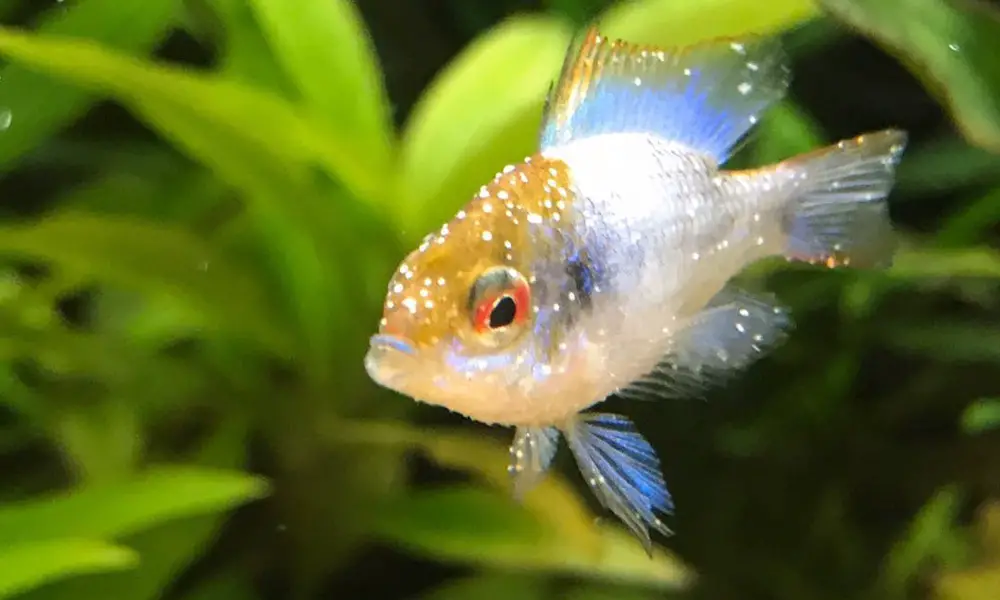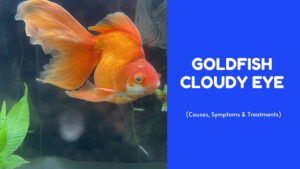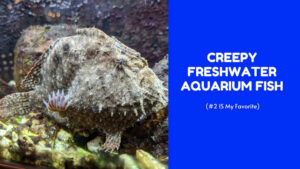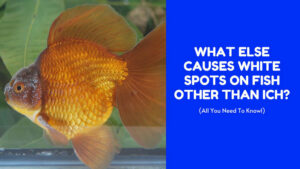Let me guess, you have a fish tank, and you’ve noticed a fish or two with white spots on their gills, fins, and body and are worried that the others might get infected?
Or perhaps you’re wondering how long does Ich stay on fish to take the necessary precautions and not lose any aquarium life?
Well, fret not because this blog will look at how long Ich stays on fish, the causes, signs, and symptoms, and how you can treat it.
Let’s plunge in.
How Long Does Ich Stay On Fish?
The life cycle of ich (Ichthyophthirius multifiliis) is roughly three weeks if you’re maintaining a temperature of 9 to 10 degrees celsius and 6 days at a temperature of 24 to 25 degrees celsius. You’ll need to continue its treatment for 5 to 7 days to completely remove the parasite from your fish, otherwise it will damage the fish’s skin, which can lead to death, making it a dangerous threat to aquarium fish.
What Is Ich?
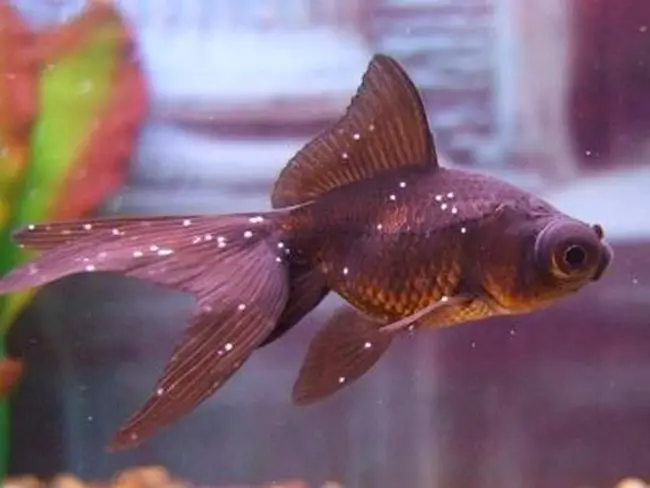
Ich is a kind of fungus also known as “white spot disease” or “Ick .”These 1mm spots are caused by Ichthyophthirius multifiliis, a type of protozoan parasite that can infect a wide range of fish and kill them if not treated on time.
The parasite enters the fish body through the gills or the mouth and multiplies itself in the blood. The symptoms of infection include flashing, lethargy, and white spots on the skin. Treatment, which involves the use of chemicals, should be done as early as possible.
Failure to get the proper treatment in time could make the parasite feeding off the fish and grow to maturity. When mature, it falls off the fish, rapidly replicating itself. The cyst then breaks open, releasing hundreds of ich protozoa into your fish tank to locate a new host.
This parasitic bacterium is highly infectious and can infect the entire aquarium.
Signs Of Ich In Freshwater Fish
Before we look at the signs, it’s vital that you don’t confuse Ich with Lymphocystis (pink to white bumps on the skin) – a chronic disease of fresh and saltwater fish that’s not treatable.
The main difference between the two is that in white spot disease, the spots are evenly distributed, while those of Lymphocystis tend to be concentrated in one part.
The other common difference is that Ich spreads quickly within a week to cover the whole fish. With Lymphocystis, these bumps tend to grow more on the spot and do not spread as quickly as Ich does.
Therefore, to identify the problem in question, look out for:
- Presence of tiny white dots on the fish’s body
- The affected fish may also spend more time near the top or bottom of the tank, not swimming around in it
- Fish flashing or using the aquarium objects like gravel to scratch themselves
- Lose of color
- Unwillingness to eat
- Ragged scales or open sores and scabs
- Lethargic and increased respiratory effort
- Death of multiple fish
These symptoms are indicative of protozoan infection. Be warned that infections can be dangerous and life-threatening.
You might be interested in reading: Betta Fish Ich: Symptoms, Causes, Treatment
What Causes Ich On Fish?
Ich is a parasitic disease caused by ciliate protozoan Ichthyophthirius multifiliis. It has a quick life cycle and can spread to all fish in the aquarium within six days.
However, what can cause Ich on a fish that’s in an aquarium that doest’n have a prior infected fish?
Well, this is often caused by ignorance to quarantine new fish being added to your aquarium. Since they multiply quickly, it only takes one protozoan to infect an entire fish tank.
I was lucky to get in touch with Dr Loh, a fish vet, and he had the following to add:
- A single or consistent use of infected equipment without sanitization can cause Ich on fish. This happens if you have several fish tanks or ponds and use the same tools and equipment between them when there is an infected fish in another tank.
- Transferring or using infected filter media and or décorations between tanks
- Moving infected water between aquarium systems
If you suspect that your fish has the disease, it’s important to diagnose it. The best way to do this is by examining your fish closely and treating the symptoms as soon as possible.
What Is The Best Ich Treatment?
Before you start treating your fish, it’s important to determine if it’s Ich, Lymphocystis, or other skin parasites. As we’ve mentioned, your fish can develop similar spots that look like Ich.
However, if a vet has diagnosed it and proven it to be Ich, you should remove the infected fish and treat it in a quarantine tank. This is a tank that’s separate from your main aquarium and used specifically for treating new fish or sick fish.
If you don’t have a quarantine tank, you can use a medication to treat Ich. The following is the best treatment you can use.
Ich-X
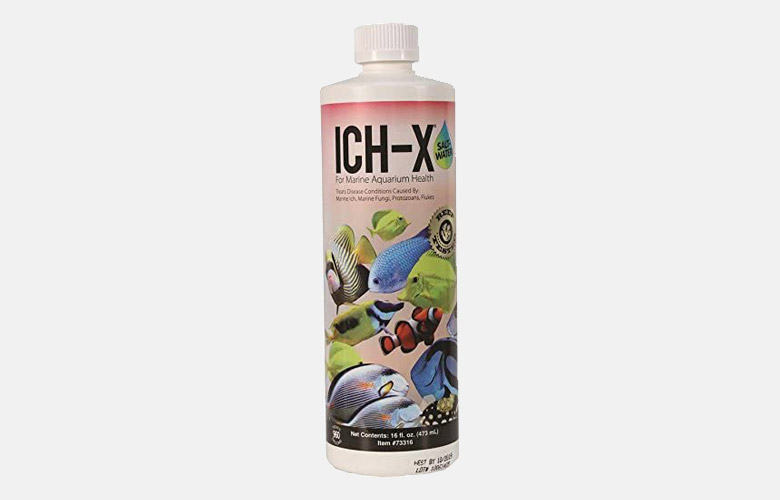
This is a treatment made of aquarium solutions. I highly recommend it because it contains a less toxic form of Malachite Green, a dangerous chemical to both the fish and the aquarium environment.
The product is safe for all freshwater fish, whether sensitive scaleless fish, baby fish, snails, or live aquarium plants, and does not harm beneficial bacteria.
Several steps are involved in achieving the best results and ensuring that your fish is treated and heals from this parasite.
- Hikari salt water ich x 16oz
- Your pet will love it
- Salt water ich x ich treatment with more, treats ich 1oz treat 60 gallons for salt water
Step 1: Clean the Fish Tank
Ensure that you thoroughly clean the tank before using Ich-X to treat Ich. This includes changing the water, performing a vacuum of the gravel to get out excess waste, and cleaning the filter to remove any build-ups.
Since the protozoan can attach itself to the viewing panel, you’ll need to clean it – both the inside and the outside.
Step 2: Remove Any Chemical Filtration
Next, remove the chemical filtration and activated carbon present in the aquarium. Don’t worry, you can reuse them after treatment.
Step 3: Dose Rate
Now in a ratio of 1:10, put 1 teaspoon of Ich-X for every 10 gallons of water.
Step 4: Allow a 24 Hour Sit Out
Wait 24 hours for the first dose to work, then change out one-third of the water in the tank and redose 1 teaspoon for every 10 gallons of water.
Step 5: Repeat Step 4
Repeat step 4 above for 5 to 7 days until no ich.
Step 6: Remove Medicine
If you notice no more ich on your fish, remove the meds from the water through a regular water change schedule of your choice. Don’t forget to do thorough maintenance once every month.
Step 7: Secondary Treatment
Treat for secondary infections if your fish’s body has wounds and tissue damage that are an ideal environment for bacterial and fungal pathogens.
NOTE: Be sure to wash your hands and disinfect any equipment or tools used during this process to prevent cross-contamination.
If you don’t want to use medication or can’t get Ich-X, you can use Fritz Freshwater Salt. However, unlike Ich-X, Fritz Freshwater Salt has a complicated dosing plan, and it is not safe for live aquarium plants or snails. Here’s a detailed guide on how to treat Ich using aquarium salt.
Final Thoughts
Ick is one of the most common diseases that can affect freshwater fish in a tank. As a parasite, Ich can only live in a fish’s environment, which is why it is so important to treat it right away.
I hope you enjoyed the article about how long does Ich stay on fish and that I was able to help you find your answers.
Do you have any other questions about Ich or anything else? Please feel free to drop it in the comment section.
